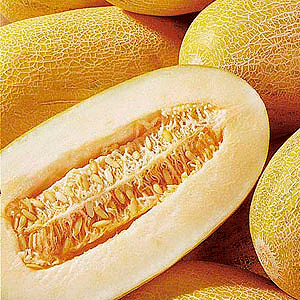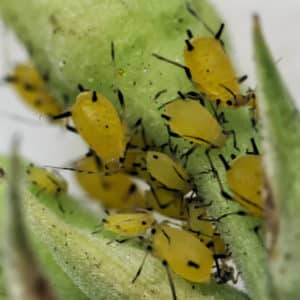We grow a delicious harvest ourselves: how melon grows in a greenhouse, open ground and at home
Melon is a heat-loving crop; it is grown in sunny and spacious beds. They are planted both in greenhouses and in open ground. Some people grow melons at home - on a windowsill or balcony. This process is simple, the main thing is to follow the regime of watering, fertilizers and fertilizing.
In this article we will look in detail at how melon grows in different conditions and how to get a rich and tasty harvest.
Botanical description and features of growing melon
Melon is a melon crop of the Cucurbitaceae family. The root system is powerful and developed, the stem is dense and hard-fibered. It is grown mainly in warm regions in soils with neutral acidity and nutritional composition.
In soils with high acidity, melons develop slowly. The climate for growth should be dry and warm.
How melon grows and blooms
Melon grows on average from 80 to 120 days, depending on the variety. The fruits increase in size, become firm and elastic. The flowers are large, bright yellow. Flowering begins at the end of June and ends in mid-July. During flowering and harvesting, melon gives off a pleasant and sweet aroma.
Interesting. Melon was brought to Russia in the 15th century. Initially, it was intended only for the royal greenhouses, but over time, peasants began to grow sweet and honey melon on their lands.
Choosing a variety
The choice of variety depends on the region, purpose, and shelf life.Some varieties are suitable for fresh consumption, others for processing and long-term storage. Some melons are decorative; they are used to decorate the garden. There are also “medicinal” varieties - with a high content of vitamins, minerals and other useful elements.
Varieties for Bashkortostan, the Urals and Siberia

Bashkiria is famous for its fertile and nutritious lands, warm climate - varieties that are demanding on soil composition grow well there. For example, Collective farmer 753. The mid-season variety ripens in 90-100 days from the moment the first shoots appear.
Plant seedlings in a greenhouse or open ground. The fruits are round, weighing up to 2 kg. The color is rich yellow, the flesh is light beige. There are few seeds, the taste is juicy and sweet, the aroma is pleasant. It is universal in use - summer salads are prepared from the fruits and consumed fresh.
Important! Cinderella and Amber melons are also suitable for planting in Bashkortostan. The fruits are famous for their high taste and commercial qualities, long fruiting and long shelf life.
In the Urals and Siberia there are cold and short summers, sudden climate changes and frequent rains. For planting in these regions, melons with early ripening periods are needed.
The following varieties are suitable:
- Ethiopian. The variety is mid-season, the growing season is 80-85 days. The bushes are compact, the vines are long and powerful. The fruits are round, elongated, yellow-orange in color. The peel is rough and has weak segmentation. The weight of the fruit varies from 5 to 7 kg, the flesh is white, juicy and sweet. Ethiopian is unpretentious in care, suitable for growing on an industrial scale.
- Amal. The harvest ripens in 70-80 days. Amal is characterized by high immunity to diseases and pests, and shows stable yields from year to year.The fruits are round-elongated, miniature, average weight - 2 kg. The peel is honey-yellow, dense, the flesh is golden-pink, juicy and sweet. The harvest is stored for a long time. The Amal variety is universal in use: suitable for preparing compotes, jam, jam and jelly.
Melon varieties for central Russia and Ukraine
Central Russia and Ukraine are territories with a temperate and warm climate. Melons are grown here on an industrial scale - they are planted in fields and farms. The varieties are mid- and late-ripening, unpretentious in care and resistant to common diseases and pests.
Among them are:

- Golden. The melon is bright orange and ripens in 90-95 days from the moment the first shoots appear. The fruits are miniature, weighing 1 kg. The pulp is sweet and juicy, pale pink in color. The peel is smooth and thin. The golden one is used for fresh consumption.
- Torpedo. A popular variety, ripens in 120-130 days, depending on the region and growing conditions. The shape is elongated, pointed towards the tips. The color is yellow-orange with weak segmentation. The pulp is light beige, the seeds are large. The taste is sweet and honey, pleasant aroma. The torpedo is stored for 1-2 months without losing its taste and commercial qualities.
- Wintering. The ripening period is 95 days, the weight of the fruit varies from 2 to 5 kg. The peel is yellow, of medium thickness. The pulp is light, oily, there are few seeds. Zimovka has a traditional taste - very sweet and pleasant. The variety is unpretentious in care and has average immunity to diseases and crop pests.
Growing methods
Sweet and juicy melons are grown in different ways. Let's take a closer look at the most popular ones.
Planting melon seeds in open ground
Growing and caring for them in the open ground at the dacha or in the garden is an interesting process. Melons are planted in open ground in warm regions. For planting, choose varieties with powerful and spreading plants. The planting pattern depends on the variety, the standard is 60x80.
The best predecessors for melon are tomatoes, carrots, cucumbers, and cabbage. It is not recommended to plant after pumpkin or watermelon. After planting the seeds in open ground, they are covered with polyethylene or thin glass to protect them from possible frosts. The protection is removed after a week.
Important! Before planting, the seeds are checked for germination - placed in a jar with saline solution and stirred clockwise. Those seeds that have sunk to the bottom are selected for planting.
Planting melon seedlings in the ground
Seedlings are prepared at the end of March. Before planting, it is hardened - placed in the freezer for 1-2 hours for a week.
The seedling method is used in regions with unfavorable weather conditions. Plants adapt more quickly to climate conditions and are immune to diseases and insect pests.
They are grown in suitable containers on a warm windowsill.
Growing melon in a greenhouse or greenhouse
This method of cultivation is typical for the Urals or Siberia. Greenhouses protect heat-loving melons from winds, frosts and rains. Before planting, the structure is disinfected with a sulfur bomb, and garden tools are wiped with a weak solution of potassium permanganate for disinfection.
In hot weather, greenhouses and greenhouses are ventilated - the windows and doors are opened, the film is removed. This is necessary to maintain the level of humidity, since its excess will lead to fungal and bacterial diseases.
Is it possible to plant a melon in a barrel?
Melons are grown in metal or wooden barrels - filled with fertile soil, with a top layer of compost. The soil is compacted and watered with warm water, and covered with a thick film for several days. Melon is planted with seeds or seedlings, each plant is covered with a cut plastic bottle to create a greenhouse effect.
After two weeks the bottles are removed. They care for the melon in the barrel according to all the rules, regularly water and fertilize it. It’s easy to grow fruits - you don’t need to bend down to the ground to weed and loosen the beds.
Growing at home
How to grow melon at home? Choose compact varieties and a convenient container with drainage holes and a diameter of at least 20 cm. Place the plantings on a wide windowsill or balcony - in a month you will need free space to tie the lashes to a support.
The house should be light and warm - melon needs light at least 12 hours a day. If there is a lack of it, lighting is provided with LED or fluorescent lamps.
Important! If you have pets or small children, place plantings away from them.
Growing instructions
To get a rich and tasty harvest, follow the basic rules of agricultural technology.
Preparing melon seeds for planting

They start with disinfection - the seeds are placed in a weak solution of potassium permanganate or soaked in aloe juice for 20 minutes. Disinfection kills pathogenic microflora on the surface of seeds and protects against pests. After the seed is germinated, it is placed in damp gauze and put in a warm place for 2-3 days.
Germination improves seed germination and strengthens the immune system. For healthy development of the root system, add a few drops of Kornevin growth stimulator to the gauze.
Important! Purchase seeds only from trusted manufacturers. When purchasing, pay attention to the expiration date of the material, recommendations for growing, and photos on the packaging.
Proper cultivation of seedlings
Seedlings are grown in any containers - pots, boxes, glasses. The main thing is that the container is washed with soda solution. For seedlings, use purchased or garden soil. It is cleaned of debris, poured with Bordeaux mixture and poured into a container.
The seedling planting pattern is 15x15. Place 1-2 seeds in one hole, sprinkle soil on top and water generously with warm water. Melons are grown in a warm and bright place.
Moisten the soil once every five days, fertilize two weeks after planting. Liquid bird droppings or nettle infusion have a positive effect on the development of seedlings. During the growing period, the plant is fed 2-3 times, with an interval of two weeks.
Selecting a site and preparing the soil for planting seedlings
Seedlings are planted early on a cloudy morning in spacious beds. The land is prepared in two stages.
The first takes place in the fall, at the end of October. The soil is dug up, cleaned of leaves and remains of last year's plants.
The second occurs in mid-March - the ground is dug up again and fertilized with liquid manure. The beds should be located in a windless place, away from groundwater.
Plant care
How to care for plantings? Care consists of regular watering and fertilizing. Irrigate the beds at the roots using water at room temperature. Moisten as the soil dries, every 5-7 days. On average, 1-2 liters are consumed per bush. If the summer is dry and without rain, then the volume of liquid is increased. Stop watering two weeks before harvest.
Fertilize the beds with mineral and organic fertilizers.They use urea, ammonium nitrate, potassium salt, superphosphate, and wood ash. Fertilizing is applied every 10-15 days before watering. Fertilizers protect against pests and improve the taste of melons.
The third stage of care is weeding and loosening the beds. The procedures protect against weeds and prevent the occurrence of diseases. Regular loosening makes the soil airy and nutritious, retains moisture in the ground.
Problems encountered when growing melons

In the process of growing, gardeners are faced with the need to form a bush. It is necessary in order to get more large and juicy fruits.
Form the plant into one or two stems by removing short side shoots. The remaining ones are tied to a support so that they do not break under the weight of the melons. If the lashes are long, they are laid out on the ground and covered with earth in several places.
Another problem is the appearance of pests. Melon aphids, whiteflies, and spider mites are found in melon beds. Insects feed on the sap of the plant, disrupting its metabolism and inhibiting the development of fruits.
For preventive purposes, gardeners spray the bushes with a whey solution. For treatment, a solution of copper sulfate is used.
Harvesting
Harvest in August or September, depending on ripening time. The ripeness of the fruit is determined by its dry stalk, yellow color, thick peel and sweet melon aroma.
Melons are picked from the plant, laid out on the garden bed for 2-3 hours and wiped with a dry cloth. For long term storage they are put into a dry and dark basement. If the fruits are cracked, they are consumed or processed immediately after collection.
Conclusion
Sweet melons are grown in greenhouses and greenhouses, open ground, rooms, and balconies.It is recommended to plant a variety that is suitable for a specific region: for the Urals and Siberia, cold-resistant varieties with high immunity and early ripening are chosen; for the middle zone, mid-ripening melons are chosen.
Care consists of regular watering and fertilizing. A month after planting, the plant is formed and the lashes are untangled. A mandatory stage of care is preventive measures to protect the crop from diseases and pests. The ripeness of a melon is determined by the dry stalk and sweet aroma of the fruit. Have a rich and sweet harvest!